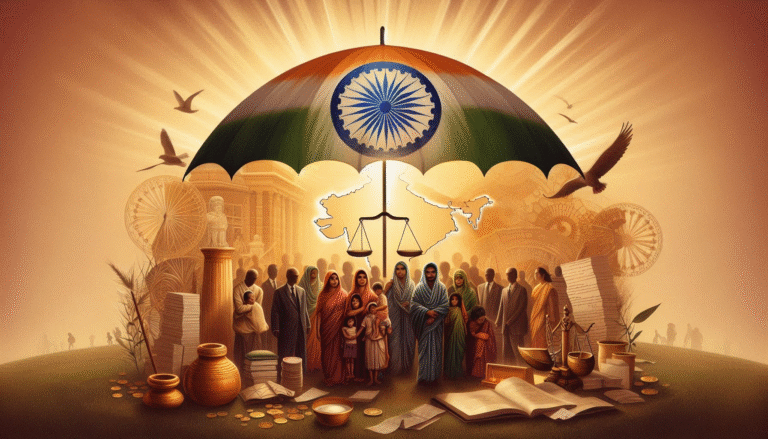
Study on Socio-Legal Services provided by NGO: Field Work.

INTRODUCTION(ABOUT THE NGO)
NGOs have played a vital role in providing aid to homeless people in various ways. One such NGO known as Bharosa Group Society situated in Pradhan Nagar, Siliguri have been operating in and around Siliguri since 2020.
The Bharosa Group is a non-profit organization which is entirely private funded and has been working with primary objective to eradicate hunger and food wastage among hungry homeless destitute, abandoned senior citizens migrant workers etc, living in public places of highway, railway stations and bus stops.
Apart from this, the organization aims at providing long term help by providing them with job opportunities and making them self reliant and making them self reliant.
The group is soon to start a small restaurant where homeless people would be encouraged to work and earn their living by providing them with an opportunity to improve their standard of living.
The NGO is setting an example for serving the humanity. It is following the fundamental principle of “Sarvajan hitay – Sarvajan Sukhey” and therefore has a long way to go in nation building.
SERVICES PROVIDED BY NGO
- Find the people in need of help like basic necessities of life and provide them with the same.
- Provide food and shelter to the people living at streets, highways and railway stations.
- Provide all the facilities like food, shelter, prper sanitation, drinking water, and many more to the people living in the center created by them.
- Create job opportunities for the people who want to work but are unable to find any job due to lack of qualifications.
- They get the steet children admitted in the school and also provide them with necessities so that they can have a bright future ahead.
- Help poor people with medical ailments to visit the doctor and receive proper medical treatment.
FINDINGS/OBSERVATIONS
The condition of homelessness is undesirable as it affects both individuals and society and is also a violation of human rights.
Mr. Amos Tshering, the co-founder of Bharosa Group rightfully stated that being homeless is especially disadvantageous for vulnerable groups like children, disabled, and women.
Vulnerable group of people in the society have to suffer from various problems among which lack of food, shelter, security, sanitation are the prominent ones which also leads to the violation of their basic human rights.

They don’t even have the basic opportunities for healthcare. Leela Agarwal, a 62 year old homeless who used to earn her living by selling sarees, went through a bone fracture and has still not recovered even after 4 months had passed since her first treatment at a government hospital. Due to this, she was unable to work and has been begging in the streets.
During my study, I encountered various such homeless persons who suffered from chronic diseases and blamed the lack of medical care for their economic disability. They had little faith in the government medical facilities and deemed them to be incompatible.
Persons migrating to urban areas from rural areas in search for employment, and better opportunities are often left homeless because of high rents (a basic apartment costs around Rs. 3000) and non-availability of houses to accommodate them.
Poor people have to choose between necessities and housing, which take up a large part of the income and so they choose to live as street dwellers.
According to the field survey, I found that the most of the homeless even after being provided with shelters, food and medical facilities by the NGOs, tend to run away from the shelters since they feel restricted or controlled as they have to abide by the rules of the shelters and are unsure of how the shelters function.

Mr. Amos Tshering and Mr. Deep Tamang, founders of the Bharosa Group were of the opinion that the street dwellers do not realize that they will have to adapt to non-street life in shelter homes.
They are accustomed to the freedom on the streets, including drug use and children enjoy playing with friends at their leisure and thus, they choose against living in drop in centers.
Many a times, the homeless were offered small jobs according to their skills but most of them were hesitant as they had little faith and feared being exploited.
This nature of the homeless has made it difficult for the NGOs to work effectively in making society free of homeless people. Many NGOs face problem in spreading awareness about issues related to homelessness, and help make people more conscious.
During the COVID-19 pandemic, due to the lockdown imposed by the government and the rule of social distancing, many institutions stopped functioning as a result of which people lost their source of income which affected the strength of donors which led to economic crisis in the ngo as well.
DATA ANALYSIS
According to the data collected from the survey, close interaction with the homeless respondents and analysis prepared based on the data, the findings are as follows:
- That about 60 per cent of the homeless in the area are not born in the city.
- That majority of 15% belongs to the age category of persons up to 20years of age, 35 % belonged to the age group of 21 to 40 years and 35% of respondents belong to the age category of 40 to 60 years. The rest 15% belonged to the age group of above 60 years.
- That majority of 20% of the homeless population are illiterate and 35% of respondents studied up to middle level and 10% of them studied up to high class. 35% are able to only read and write and none having a graduate degree is encountered.
- That 45% of the homeless are not beggars and are engaged as casual laborers, rickshaw-puller, rag-pickers and as domestic help as per.
- That 60% of the people were married, 30% unmarroed and 10% deserted.
- That 55% of homeless respndants were male and 45% were female.
- That 30% of homeless persons has good health and 35% of them suffered from chroniv diseases. 35% of homeless persons have other type of health issue.
- That as low as 5% of the respondents received medical facilities from private clinics, 60% availed medical treatments from government hospitals, 30% of them only took self medications and the other 5% received no medications. The homeless persons who received medical treatment from the government hospitals found the treatments incompatible.
- That 55% of homeless persons stay permanently and 45% of homeless persons stay temporarily in the area.
- That a majority of 80% of homeless persons do not hold any bank account. However 20% of homeless persons have bank account.
- That as many as 60% of the persons do not have identification proofs and other 40% had one or the other identification proofs.
- That out of the total persons holding id proofs, 25% had voter card, 62.5% had adhar card and 12% had other type of identity documnets.
- That a majority of 70% of the respondents are unaware of the various benefit schemes launched by the government, 30% are aware. Those willing to avail one or two of such benefit have no proper documentations for the purpose. However, 33% of the conscious homeless were availing one or the other schemes.
- That only 10% of the homeless population in the area were approached by NGOs who offered them a living arrangement in shelter homes. 20% of the homeless have experienced being in and out of shelter homes . A majority of 50% recieved other helps from NGO and there are 20% of the homeless who have received help from the NGOs or shelter homes.







